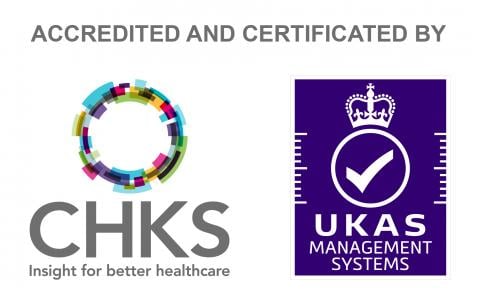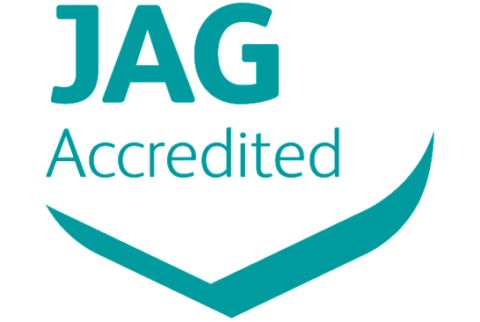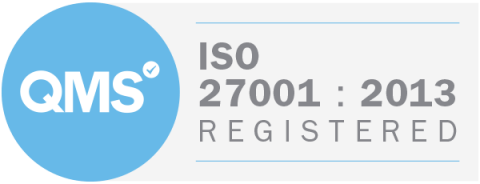Women’s Health Physiotherapy assesses and treats disorders affecting the pelvis and pelvic floor.
Some women may experience problems:
- During pregnancy - with conditions such as pelvic girdle pain or pubic symphysis dysfunction.
- Postnatally - with conditions such as rectus diastasis.
- After surgery - to support with breast cancer post operation rehabilitation
- Throughout life, including perimenopause and menopause, with disorders such as prolapse and bladder or bowel problems.
The Most Common Pregnancy-related Disorders
During pregnancy 1 in 5 women develop symptoms of pain around the lumbar spine and pelvis. These ailments can be caused by simple overload of the spinal joints which can become stiff due to the extra load of carrying the baby.
More severe pelvic girdle pain (PGP) or pubic symphysis dysfunction (PSD) happens when the pelvic joints become inflamed due to the excess movement at the joint surfaces as a result of the increased ligament laxity in preparation for the delivery of the baby.
PGP can be very painful and can severely limit activity in expectant mothers. Walking even short distances, climbing stairs and turning in bed can all be very painful, making even the simplest of tasks very difficult.
How Can Pregnancy-Related Disorders be Treated?
Early advice and treatment can keep pain levels to a minimum and avoid longer term issues. Treatment may include manual therapy for muscles and joints, exercises to strengthen the muscles supporting your pelvis, pelvic support belts and advice for labour and birth
Stress incontinence and urgency due to hormonal change and the increasing weight of the baby is also common during pregnancy. Early intervention and treatment can help alleviate symptoms and help reduce the risk of long-term continence problems in the future.
Postnatal Physiotherapy and Mummy MOT ®
The body goes through many changes during pregnancy and childbirth. Postnatally they can result in bladder and bowel incontinence, separation of the abdominal muscles (rectus diastasis), bladder or bowel prolapse, perineal tears, pelvic pain and pain during intercourse.
It is important to address issues early to prevent problems later in life. This can be done via a Mummy MOT ® which will include a tailored postnatal physiotherapy plan for recent mothers. As part of the treatment, your assessment will include bespoke pelvic floor exercises for women which will support you in your recovery to regain and improve stability, posture and core strength.
What are Your Postnatal Treatment Options?
Assessment
Treatment can be commenced after the 6-week check and includes an assessment of the strength of the pelvic floor muscles and supervised pelvic floor exercises for women to re-train the muscles with monitoring in the clinic.
Some of the treatment options included in postnatal physiotherapy are:
- electromyographic (EMG) biofeedback, to measure your movements, postural control and force production in the abdominals and pelvic floor
- advice on pelvic floor educators and stimulators which can improve activation and power in the pelvic floor muscles
- tips for effective bladder and bowel emptying
- return to exercise
The Mummy MOT®
The Mummy MOT ® is an approach specifically designed for postnatal needs. A Mummy MOT ® provides a more in-depth post-natal check for those who perhaps need reassurance or have unanswered questions following the 6-week GP check.
The one-hour Mummy MOT ® assessment available from 6 weeks postnatal provides:
- an assessment of pelvic floor strength and tummy gap check
- a full body postural assessment addressing any physical problems arising from pregnancy and birth
- a report of findings
- a post-natal recovery programme for specific lifestyle and fitness goals
- a bespoke and safe post-natal exercise program to improve stability, posture and core strength
Bladder or Bowel Problems
Women's incontinence is a distressing problem that can affect women of all ages and involves leakage of urine, wind or stool. Stress incontinence which is leakage on cough, sneeze or high impact exercise like running is usually caused by weak pelvic floor muscles.
Urge incontinence is the sudden desire to go to the toilet with reduced control and is sometimes caused by fluids that irritate the bladder like fizzy drinks and can even be caused by insufficient fluid intake.
Anal incontinence is leakage of stool or wind caused by muscle weakness around the back passage. History of constipation can add to anal leakage due the additional straining with bowel movements which stretches and weaken the pelvic floor muscles.
How Can Incontinence be Treated with a Women's Physiotherapist?
Physiotherapy, specifically pelvic floor exercises for women can help reduce leakage by helping to strengthen the pelvic floor muscles and improve their function. Electrical stimulation can be used to re-train the muscles if they are weak and help you to tighten them. EMG can help to gain biofeedback to improve muscle activation. Drinking habits, a bladder diary and bladder retraining can help control urgency and frequency. Tips on how to empty the bowels more effectively can help to avoid straining.
Pelvic Health
As well as the pelvic floor muscles being too weak, often referred to as being hypotonic, they can sometimes be unable to relax fully, referred to as being hypertonic. The muscles need to contract to maintain continence but they must also relax to allow for urination, bowel movements and sexual intercourse.
A hypertonic pelvic floor can cause symptoms of urinary frequency, urgency, hesitancy and incomplete emptying of the bladder as the muscles squeeze on the urethra interrupting the flow of urine from the bladder. It can also cause difficulties or pain with bowel emptying, pain in the pelvic region or genital area and pain during or after intercourse. Hypertonicity can also contribute to vulvodynia, vaginismus, interstitial cystitis or pudendal nerve neuralgia. Treatment centres on relaxing the pelvic floor muscles to release any underlying tension using relaxation and breathing techniques, pelvic exercises, the provision of vaginal dilators and EMG biofeedback to train the muscles to let go can be of great help.
Rehabilitation after Breast Cancer Surgery
Physiotherapy after breast cancer surgery supports recovery by improving mobility, reducing pain, and managing swelling. Our specialist team offers personalised care following procedures such as mastectomy or lymph node removal. We help with decreased arm mobility, arm pain, and lymphoedema management through tailored exercises and manual therapy. With tailored exercises and hands-on care, physiotherapy after breast cancer surgery can restore strength, flexibility, and comfort.
Our team here at the New Victoria Hospital can help guide your rehabilitation after breast cancer surgery with expert, compassionate support.
Women's Physiotherapy Services
At New Victoria Hospital, we offer physiotherapy for women to support with the following areas:
Pelivc health physiotherapy
- Women's urinary incontinence and bowel incontinence
- Prolapse management for women
Antenatal physiotherapy and postnatal physiotherapy
- Mummy MOT
- Support with diastasis recti
- Women's urinary incontinence as a result of pregnancy
- Musculoskeletal problem such as postural awareness, pelvic girdle pain, low back pain, wrist pain
Rehabilitation after breast cancer surgery
- Decreased arm mobility
- Arm pain and swelling
- Lymphedema management
- Tight cord










